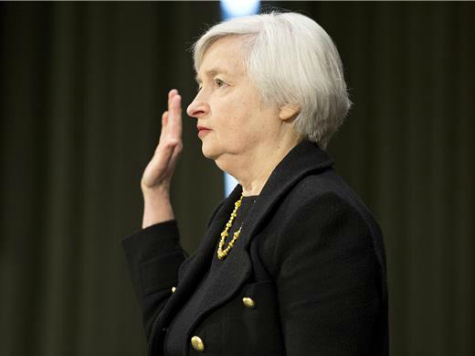In her first appearance before Congress this week, Federal Reserve Chair Janet Yellen achieved the primary goal of any new Fed chief and avoided any obvious land mines. But what was lacking in the dialogue, both from Yellen and the media, was a serious discussion of what’s next for national economic policy.
First, to understand what the Fed has been doing for the past five years and more, we need to go back to the Roaring Twenties and before. For the great Money Trusts had been accumulating economic power and political influence behind an opaque screen of secrecy. There was also massive financial leverage, hidden inside the monopolies of trusts and pyramids formed during and after the Gilded Age.
The leverage and financial fraud that accumulated from the late 1800s through until the Great Crash in 1929 was massive and largely hidden. The financial crisis of 1907, for example, when the House of Morgan rescued the US financial system, was just a hint of the financial collapse that was to come. But the financial leverage and fraud continued to build in the financial system under a veil of legal secrecy.
In 1912, when JP Morgan appeared before Congress to refute the notion that the Trusts needed to be more transparent, he complained that “the time is coming when all business will have to be done with glass pockets.” Beverly Gage, a Yale history professor and is the author of The Day Wall Street Exploded, wrote a great piece in Slate about this period that ought to be required reading for every member of Congress. But the key point is that when leverage and fraud is hidden from investors, eventually the financial system breaks down catastrophically.
In economic terms, the problem in 1929 and 2007 was the same. If you imagine the US balance sheet comprised of assets on one side and liabilities and capital on the other, the system was seen by investors to be in “balance” so long as the normal level of losses on assets did not overwhelm the capital on the other side of the national ledger. But once the full scope of the accumulated fraud and hidden leverage on Wall Street was revealed, it was very clear that the losses more than wiped out the capital and then some. What followed was the Great Depression of the 1930s, WWII and several more decades of very low growth and private capital formation.
So too in 2007, the problem was hidden leverage in off-balance sheet entities and securities fraud. When the tens of trillions of dollars-worth of subprime toxic waste and derivatives were revealed, private investors naturally fled. The Fed stepped in with massive infusions of liquidity and “quantitative easing” to prevent the forced liquidation of the asset side of the ledger – a process that would have essentially left the US economy decapitalized and in the same deflationary trap as occurred in the 1930s.
The lack of disclosure rules that caused the Great Depression by hiding all the leverage of “trusts” was only partly remedied in the 1930s and only finally corrected in 2009, when the Great Recession forced the SEC and Financial Accounting Standards Board to end the outrageously stupid notion that off balance sheet vehicles spawned by the big banks could be ignored. When the markets (and eventually the FASB) said that the one who owns the “unexpected loss” must consolidate these vehicles, the asset side of the ledger was clearly out of balance to the tune of tens of trillions of dollars. Investors fled, banks and non-bank financial firms failed in droves, and eventually caused the rescues of Citigroup, American International Group and Washington Mutual, to list but a few names.
What the Fed has done since 2007 has been to buy time for the US financial system, but that is all. The damage done to the US economy has been considerable and has still not been addressed. Indeed, the various “reform” initiatives put in place since the start of the crisis have reduced the amount of leverage in the US economy and thus our ability to grow and create jobs. Modest amounts of leverage are essential for growth, but excessive and hidden leverage is extremely dangerous. The key is finding a balance.
So the key question that nobody asked Fed Chair Yellen this week is “what do we do now?” The Fed has bought us valuable time, but in order to continue the healing process we need to focus on reducing the remaining pockets of bad assets in the economy – like the 20-30 percent of American homes that are still worth less than the mortgage. The reactionary regulations put in place since the crisis, like the 2010 Dodd-Frank law, also need to be reexamined.
But the key thing for all of us to realize is that easy money from the Fed in the form of “quantitative easing” is not enough to restore economic growth – it is just a start. To finish the recovery from the crisis of 2007, we need to attack the remaining cancer inside the US economy and start to address issues like the budget deficit and tax policy. But does anyone in Washington have the courage to lead this discussion?

COMMENTS
Please let us know if you're having issues with commenting.